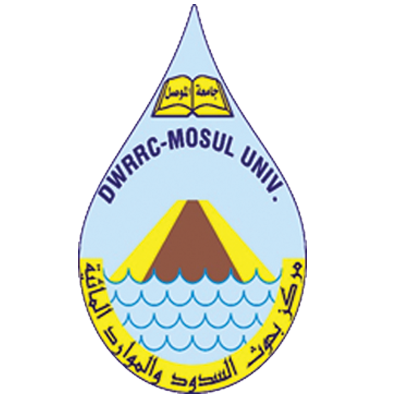Geotechnics laboratory
Laboratory Description:
The laboratory is located within the newly constructed building of the Dam and Water Resources Research Center at the University of Mosul. Its area is 12×7 square meters and includes an office room for the laboratory supervisor, a bathroom, and a storage room for keeping devices and equipment. The hall contains fixed benches with sinks, movable benches, and cabinets arranged to achieve optimal distribution of laboratory equipment with their accessories for conducting tests. The laboratory also includes cooling and air conditioning devices, air exhaust systems, and fire extinguishers.
Laboratory Tasks:
Conducting all field geophysical surveys of soils and subsurface layers, performing all laboratory and field tests related to the engineering properties of rocks, preparing and interpreting results, providing consultations and studies related to them, as well as conducting experiments and studies related to the research of the center’s faculty or postgraduate students in relevant scientific departments at the University of Mosul.
Laboratory Equipment:
1. Refractive Seismic Measurement Device
2. Electrical Resistance Measurement Device
3. Electric Balances
4. Rock Sampling Equipment
5. Soil Sample Compression Device
6. Particle Size Distribution Measurement Device for Clastic Rocks
7. Drying Ovens
8. Combustion Ovens
9. Rock Cutting Devices
10. Rock Core Drilling Device
11. Rock Shear Resistance Measurement Device
12. Geological Compass
13. Polarized Microscope
14. Digital Imaging Microscope
15. Schmidt Hammer
16. Electric Percussive Drill
17. Air Pick
18. Opening and Repair Tools
19. Various Glassware
Laboratory Tests:
1. Preparing rock samples for engineering tests
2. Particle size distribution test for clastic rocks
3. Rock density test
4. Rock porosity test
5. Rock saturation and moisture content test
6. Preparing and compressing clay samples
7. Rock combustion and clay firing
8. Preparing and studying rock slices and photographing them
9. Field resistance and rebound coefficient test for rocks
10. Total salt content test in rocks and residue percentage
Field Geophysical Surveys:
1. Conducting geophysical surveys to determine the depths of subsurface layers
2. Conducting geophysical surveys to determine the depths of groundwater-bearing layers
3. Conducting geophysical surveys to detect subsurface voids and cavities
4. Conducting geophysical surveys to locate subsurface fractures and faults
Laboratory Safety Precautions:
1. Firefighting supplies (portable extinguishers)
2. Safety supplies (warning signs to switch off electrical and cooling devices upon departure)
3. Device and chemical material supplies (instructional signs for using laboratory devices and chemical materials)
4. Air exhaust supplies (warning signs to operate air exhaust systems when using laboratory devices)

